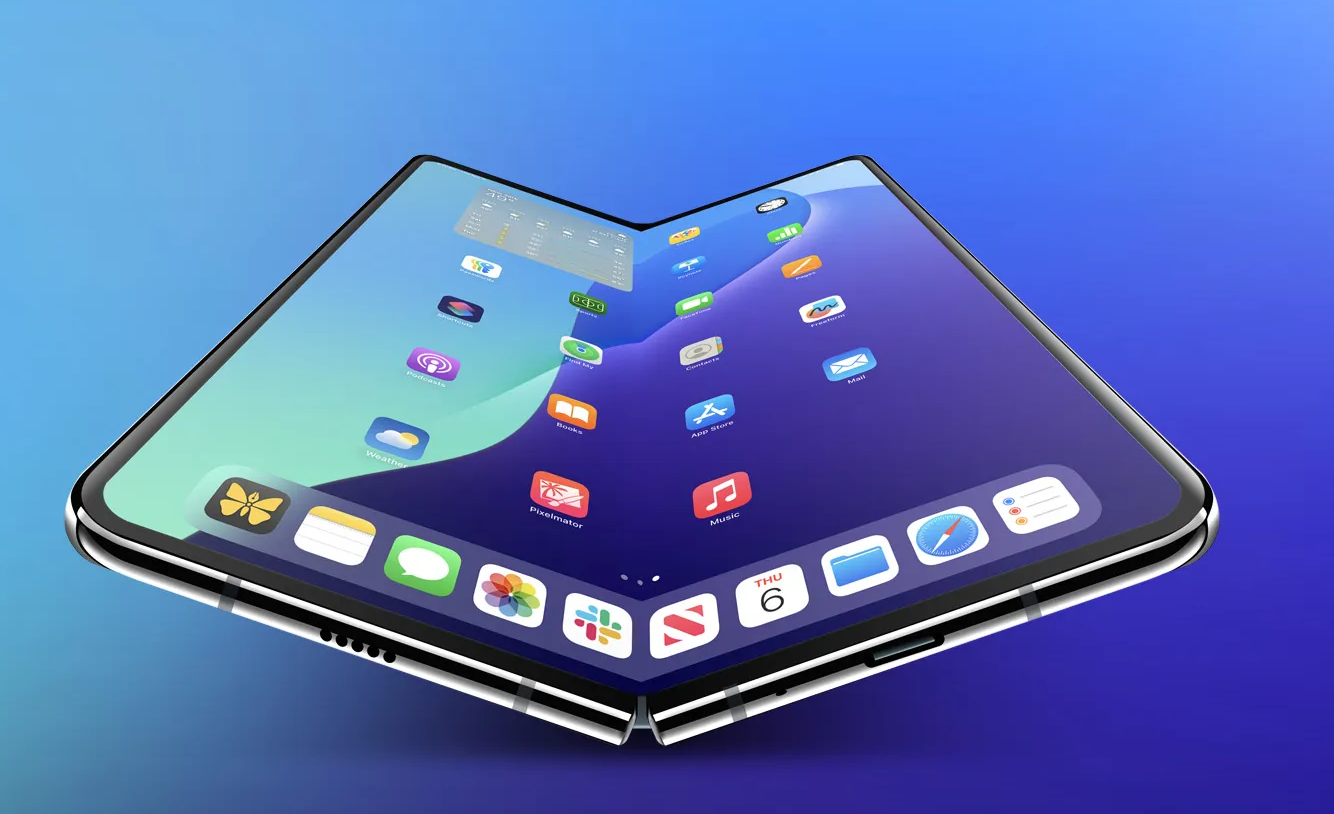The legendary foldable iPhone - long the subject of countless leaks and questionable reports - may finally materialize just in time for the 20th anniversary of the iPhone.

In his Power On newsletter, Bloomberg’s Mark Gurman revealed that Apple is preparing a completely different marketing strategy for its upcoming foldable iPhone.
A flagship above flagships
Unlike the upcoming Samsung Galaxy Z Fold 7 or the current Google Pixel 9 Pro Fold, Apple’s foldable iPhone won’t be a niche product. Instead, Apple plans to position it as an ultra-premium model, sitting even higher than the yearly Pro Max flagships.
Apple has spent years developing its foldable iPhone in order to “perfect” the folding mechanism. One of its core design priorities is to make the crease nearly invisible. Naturally, this goal means the device will likely be priced higher than any previous iPhone model.
Clearly, Apple is targeting a high-end audience with a sleek, crease-free design and premium materials. However, a thinner form factor may compromise battery life, and the possible removal of Face ID - a signature iPhone feature - could spark controversy. While focusing on a seamless fold is key to enhancing user experience, if durability issues arise, Apple may face backlash similar to what Samsung experienced with its first-generation Galaxy Fold.
According to both Mark Gurman and analyst Ming-Chi Kuo (via MacRumors), the foldable iPhone is expected to cost between $2,000 and $2,500. This puts it above the Galaxy Z Fold 6, which is priced around $1,900. That gap could widen further due to escalating US-China tariffs, which could range from 145% to 245%.
Apple is known for using high prices to position its products as luxury items. However, this strategy narrows its customer base, especially in the context of global economic uncertainty and rising tariffs. Compared to the Galaxy Z Fold 6, a $2,000-$2,500 price tag could face pushback unless Apple delivers superior value in areas like durability, battery life, or exclusive AI features. That said, Apple’s devoted fanbase may still drive strong sales even if the device isn’t mainstream.
A shrinking foldables market – can Apple reverse the trend?
Samsung recently had to lower sales expectations for its Galaxy Z Flip 7 and Fold 7 models, as the entire foldable phone segment has fallen short of projections. The company is planning to manufacture only about 200,000 units of its upcoming tri-fold device, given the steep price and low demand expectations.
Samsung also plans to launch this tri-fold phone only in select high-income markets. These developments make Apple’s marketing strategy for the foldable iPhone hard to predict - will it truly be viable?
If previous foldables failed due to pricing, Apple may face the same challenge. Perhaps Apple is betting that a nearly crease-free foldable screen will be enticing enough to get consumers on board - especially for a foldable iPhone.
A revolutionary 20th-anniversary iPhone Pro
Apple is expected to unveil the foldable iPhone in the second half of 2026 alongside the iPhone 18 Pro, iPhone 18 Pro Max, and iPhone 18 Air. Meanwhile, the standard iPhone 18 will be pushed back to spring 2027. According to MacRumors, this shift aims to manage the expanded product lineup (six models instead of five) and reduce pressure on simultaneous production.
This launch strategy suggests that Apple is prioritizing premium, innovative models like the foldable iPhone to appeal to high-paying users.
Dividing release schedules is a smart move to optimize production and focus marketing efforts. However, it may frustrate customers waiting for the standard iPhone - especially as Apple delays key software features, like the revamped Siri, until 2026. This could reduce upgrade incentives for current iPhone 16 users.
Apple's strategy also reflects fierce competition in China from brands like Honor and Huawei, forcing the company to rethink its approach.
Hai Phong (PhoneArena, CNET)